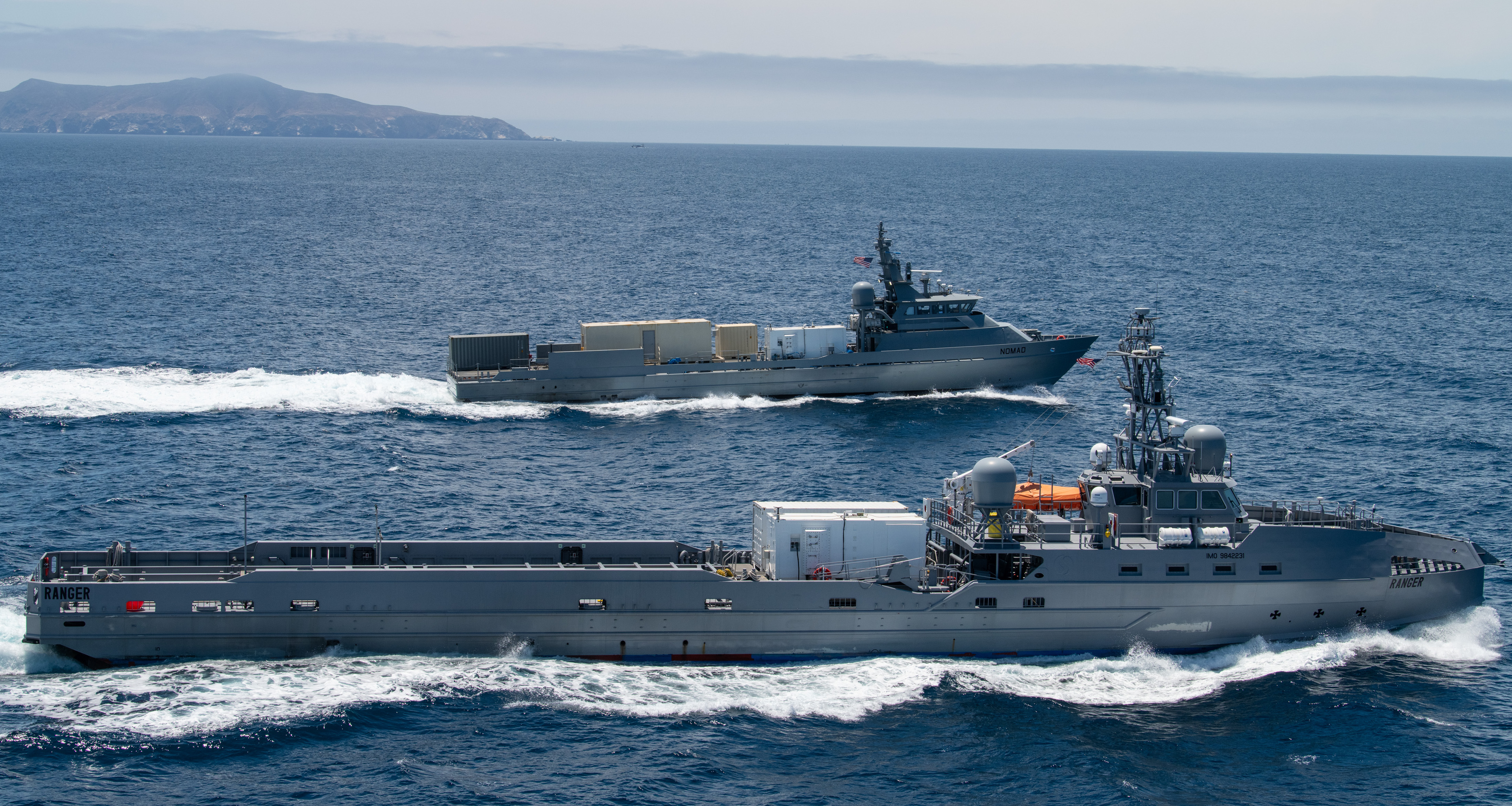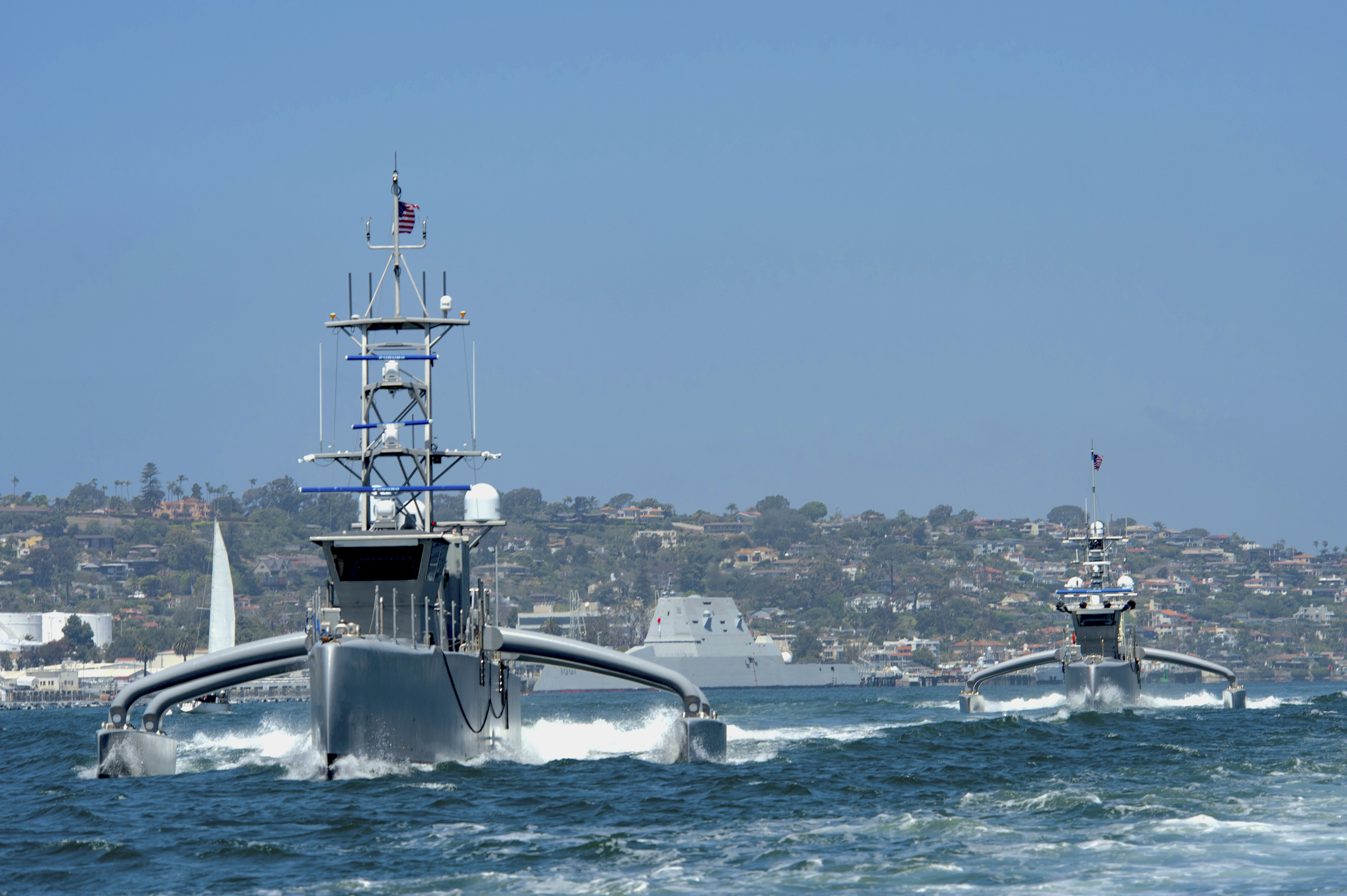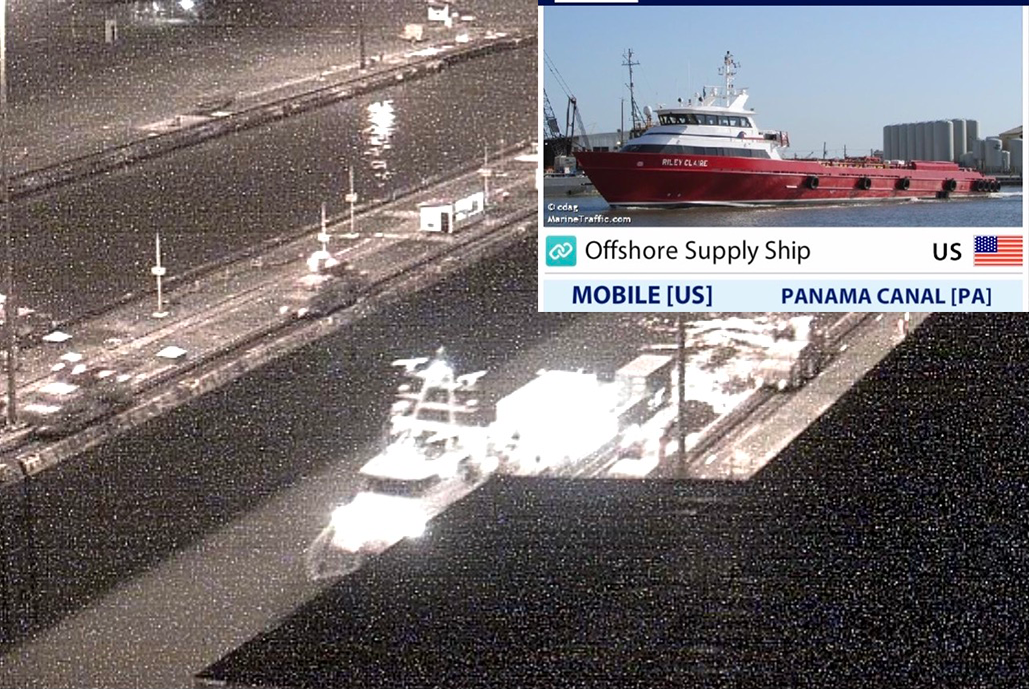
The pair of Ghost Fleet ships the Navy and the Pentagon’s Strategic Capabilities Office are using as testbeds to prove large autonomous vessels can operate effectively at sea are slowly moving toward completely unmanned operations.
Unlike the medium unmanned surface vessel demonstrators Sea Hunter and Sea Hawk, the much larger converted off-shore oil and gas support vessels have yet to cross the threshold of operating with no one aboard, Capt. Pete Small, Navy Program Manager for USVs, told an audience at AUVSI’s unmanned defense conference on Tuesday.
“The current way we operate them is that we pilot the USVs into and out of port in manual mode with a small crew on board. This is consistent with the Navy’s plans for medium USV and large USV,” he said.
“Once the USVs is an open ocean, we make the transition to autonomous mode and continue with operations that include remote mission planning, command and control and supervision from either a shore based or afloat … on another manned surface vessel’s unmanned operations center. For now, the small crew stays on board during the autonomous operations for supervision of the autonomy and monitoring of automated systems. While we collect data and develop trust in the system performance, we’re actively working towards demonstrations where we will take the crew off the vessel and demonstrate truly unmanned operations at sea.”
The two Ghost Fleet Overlord ships, Nomad and Ranger, traveled from the Gulf Coast to their current California home, only moving into a manned mode when transiting the Panama Canal. The rest of the voyage was controlled from California.
“The command and control systems were able to provide a mission plan, which consists of a scheme of maneuver and the system calculates the course in speed to complete those missions. The system reacts to the contact that it encounters along the way and replans and reprioritizes how to achieve those objectives,” Luis Molina, the deputy director of SCO, told reporters earlier this month.

Now the pair are currently amid a mix of Navy and SCO experimentation schedules that will inform the Navy’s Large USV program. The Navy has said it wants the Large Unmanned Surface Vehicles (LUSV) to operate as an auxiliary missile magazine for its guided-missile combatants, netted into the Navy’s larger tactical data network for the fleet.
“That’s been part of the work… adapting Navy program of record navigation systems aboard to complement existing commercial systems that operate with the autonomy and the government furnished navigation systems are key to security but also to the operations of potential payloads and other systems that could be integrated into the prototypes in the future,” Small said.
Proving that the ships can be networked effectively and securely is a major test for the concept if LUSV going to operate as a weapons platform. The Navy is moving to load the Overlord hulls with Navy-specified systems to tie them into the combat systems and datalinks already in the fleet. The concept would have a human in the loop making the ultimate firing decision.
“Any weapons control is executed by a human operator at the remote-control node, whether that be shore-based, or sea-based,” Small said.
“Ensuring we have resilient, robust and encrypted communications and resilient communications to the unmanned surface vessel throughout its operation with human in the loop, command and control is paramount, and we’re working to deliver that.”

Moving ahead, Nomad and Ranger will operate in “major naval fleet exercises that are occurring over the next few months,” Small said.
“The program will culminate with a demonstration to wrap up the technology demonstration of the SCO investment and establish a technical position of transition to hand it over to the Navy.”
Small did not specify the exercise, but the Navy is scheduled to kick off the combined Atlantic and Pacific Large Scale Exercise next month.
In addition to the two SCO hulls, the Navy is buying two more Overlord hulls to continue the testing regime as part of a $80 million buy for the two ships, Pentagon officials told USNI News. Additional details were not provided due to the SCO’s policy of not disclosing the cost and sources of their experimentation programs.
However, USNI News understands the companies involved with the Navy hulls are the same the SCO used to convert Nomad and Ranger in 2018 – Gibbs & Cox and L3 ASV Global.





